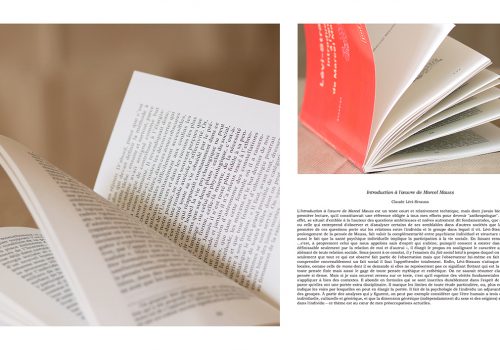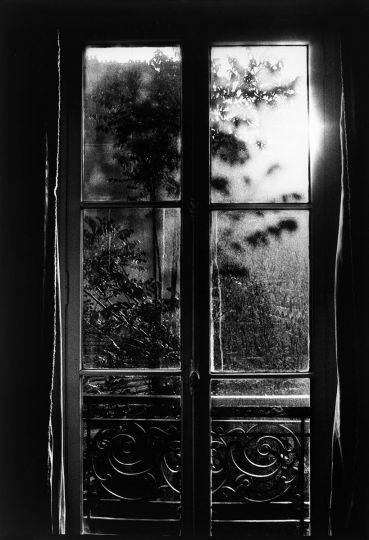“Through his choice of readings, the thinking man is revealed” – Marguerite de Merode
The exhibition Livres au miroir is extended until February 29, 2020, in the large gallery of the Mazarine Library in Paris, and brings together 27 photographic works by the artist Marguerite de Merode around a unique artistic approach: that of retracing the portrait of 27 protagonists of the French cultural and scientific world through the written testimony of the work that transformed their lives. In collaboration with the director of the Mazarine Library Yann Sordet (general commissioner) and Florine Lévecque-Stankiewicz (assistant curator), in charge of public services and communication, this creation also receives support from the Wendel-Participations and Wendel groups.
Second part of an innovative concept of “literary portraits” having emerged in Italy in November 2017 with the exhibition Libri allo specchio at the Angelica library in Rome around 25 figures from the Italian cultural world, the Parisian exhibition Books in the mirror reveals the favorite works and intimate readings of personalities from the French-speaking intellectual world.
We find, among the personalities invited by the artist, a wide range of thinkers, creators, researchers from all horizons, contemporary and representative of the 21st century France: writers, philosophers, poets, art historians, anthropologist, musicians , publishers, essayists, journalist, to the big world of scientists … What better place in Paris than the Mazarine Library to welcome these secrets? The personal collections of Cardinal Mazarin (1602-1661), successor to Richelieu and principal minister during the minority of Louis XIV between 1643 to 1661, allowed its creation. La Mazarine is the oldest public library in France. More than three hundred and fifty years after its foundation, it is today a book museum, a study library and a research center.
If in the past, painted, sculpted or photographed portraits conveyed the social image of their models, Marguerite de Merode offers through her works to draw an intimate portrait of these great French-speaking personalities, no longer relying on the figurative representation of subject but on the personal and intimate image of a book that has modified their existence. In a sleek photographic device, each of these works consists of two images of the book and a text written by each of the invited readers. Through this process, the artist delivers a work that touches the intimate, with the ambition of offering an unusual portrait of great French-speaking thinkers.In the first chapter of If by a winter night a traveler, published in June 1979 at Einaudi, Italo Calvino tells with great insight and humor the relationship between a hypothetical reader and his book, bought in a bookstore where the reader finds himself confronted with a compact wall of “Books That You Have Never Read” , to which are linked “Books You Can Do Without”, “Books Designed For A Purpose Other than Reading” and around twenty other categories describing all the relationships that can be created between a reader and a book.
However, among these, we do not discover there, “Le Livre Qui Te Represente”, which takes up the subject of Marguerite de Merode’s exhibition. It is not excluded that Calvino would have included it in his list. A choice not only intellectual but also existential, inherent in the life of the 27 readers of excellence to whom the artist asks to choose, not only a work, but above all to indicate the deep reasons for their fatal attraction, which takes shape with an image of the interior of the book, transformed into what Giuliana Bruno would call an “atlas of emotions”. A simple word, a fold in the paper, a slight underlining in pencil, a fundamental passage of the page: it is in these areas of attention that the inner compass of the reader has stopped, the intersection between sentence and intimate sensitivity is developed and transformed into a punctum as Roland Barthes defines it in his essay on photography, La chambre claire. To retrace this intimate cartography, Marguerite de Merode uses a photographic image which makes visible the web of affinities which link this book to her reader. And these are the photographs I’m talking about, extrapolated from their content but described as pure images, in a sort of gallery of contemporary literary portraits exhibited in the rooms of the Mazarine library. Each text is a threshold, each page a window open on a thought process revealed by the works of Marguerite de Merode, capable of condensing the meeting of a book and a soul into a single image.
Ludovico Pratesi
Livres au miroir
an exhibition by Marguerite de Merode
Extension until February 29, 2020
Bibliothèque Mazarine, Paris
23 quai de Conti
75006 Paris
https://www.bibliotheque-mazarine.fr/fr/
















